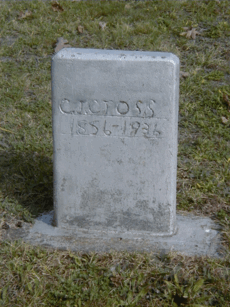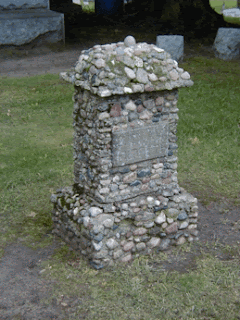One thing I find fascinating about our area cemeteries is how the various cemeteries reflect the local landscape.
I have mentioned before how Curtice cemetery has so many of the cement markers. Is it just coincidence that there is a nearby ghost town (Marlborough) that was home to a cement plant? There are so many of these cement markers that range from ones with professional looking engravings...
to the ones like my Great-grandfather's stone here. It clearly was hand crafted.
In the less affluent parts of the county, it is not uncommon to find more temporary markers.
These wooden ones may not last long but while there they are there, they stand in memory of the departed.
This may not be as temporary as the wooden crosses, but it probably does have a limited shelf-life compared to granite. But in this part of the country where lumbering and wood cutting was so prevalent, it is not rare to see these large saw blades. I have a couple in my garage. So it is a case of using what was at hand as a marker, together with the talents of those left behind.
But the real local touch comes from the stone markers. Some parts of the county, like much of Michigan are low, flat, and sandy or marshy. Other areas, thanks to the receded glaciers of the Ice Age, are full of stones and gravel. These rolling hills and rocky areas are where you find piles of fieldstones, as well as the cemeteries that have monuments like the ones here.
Clearly using what was at hand, this stone from Ashland Cemetery is studded with field stones.
This stone basket style urn is from just north of Newaygo in Lake county. Hawkins Road Cemetery is surrounded by fields with piles of stones, houses with stone exteriors, and fences of piled stones. Clearly a case of using what was available to make monuments to the departed.








No comments:
Post a Comment
Note: Only a member of this blog may post a comment.